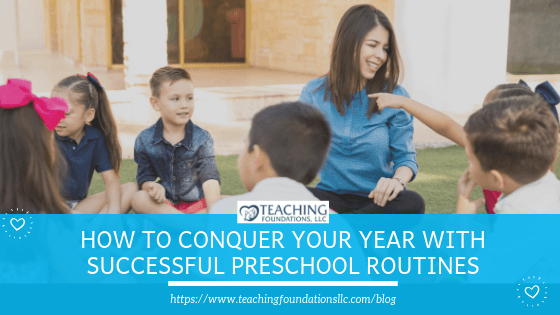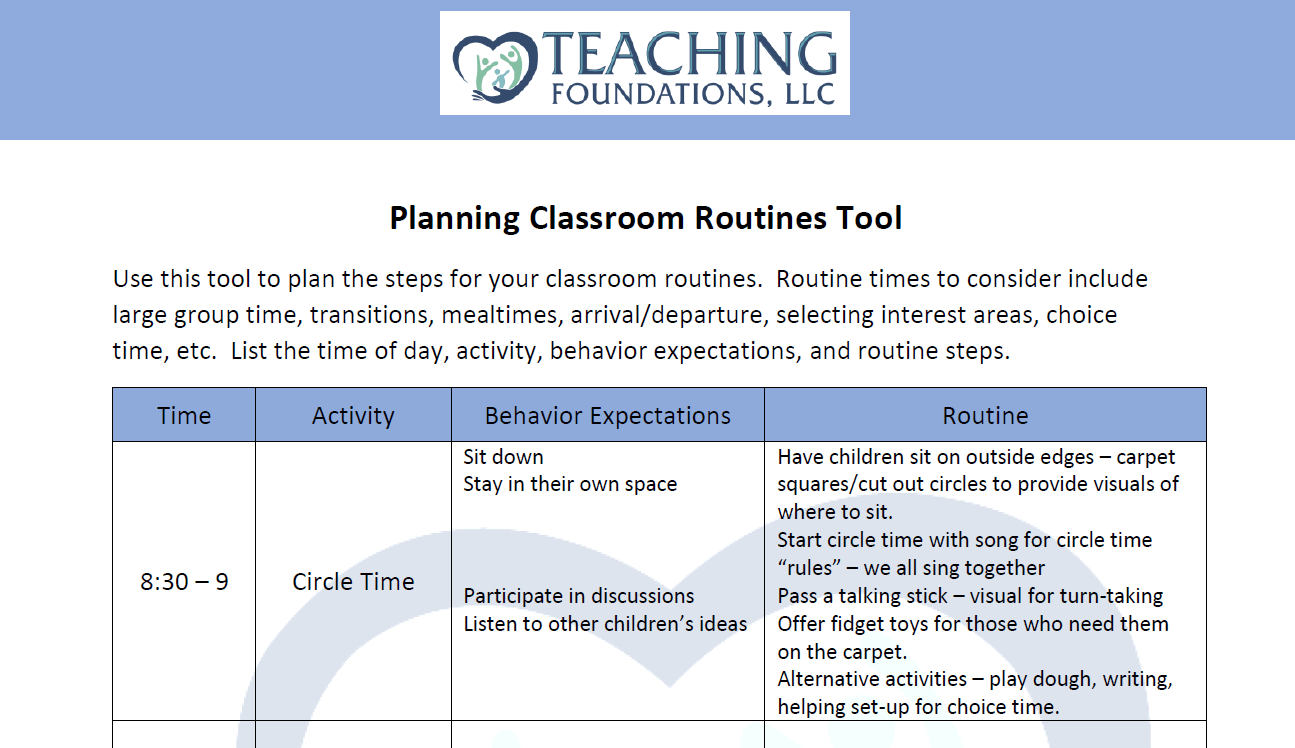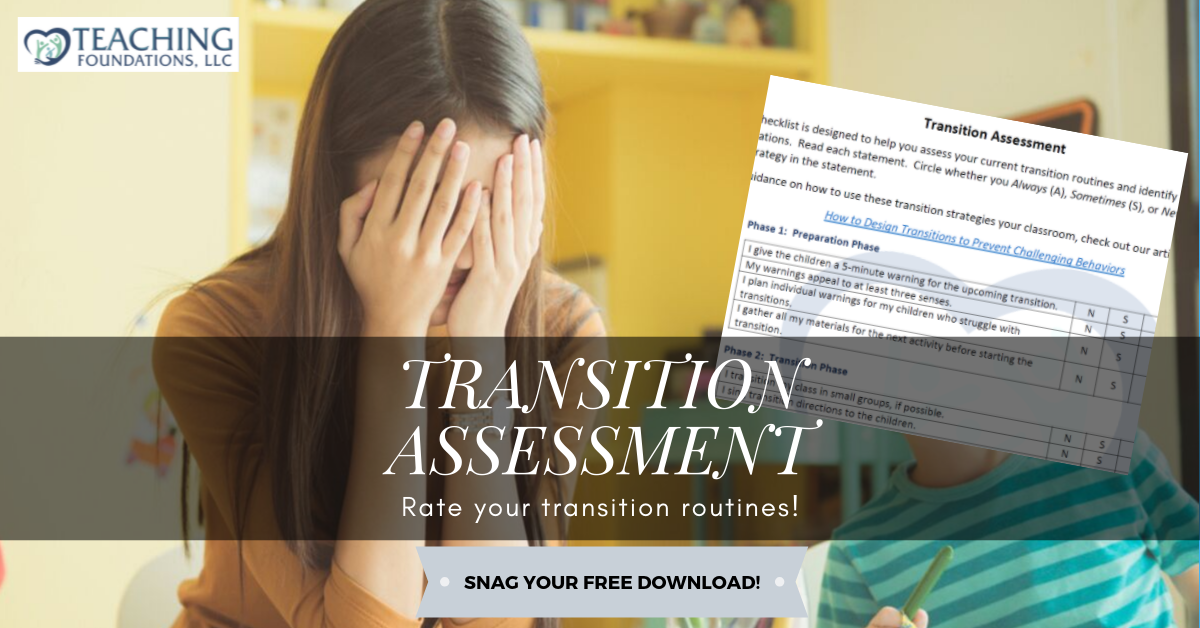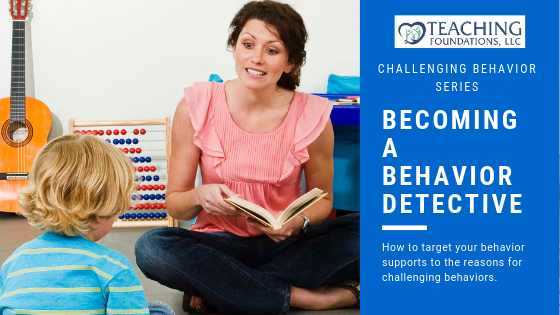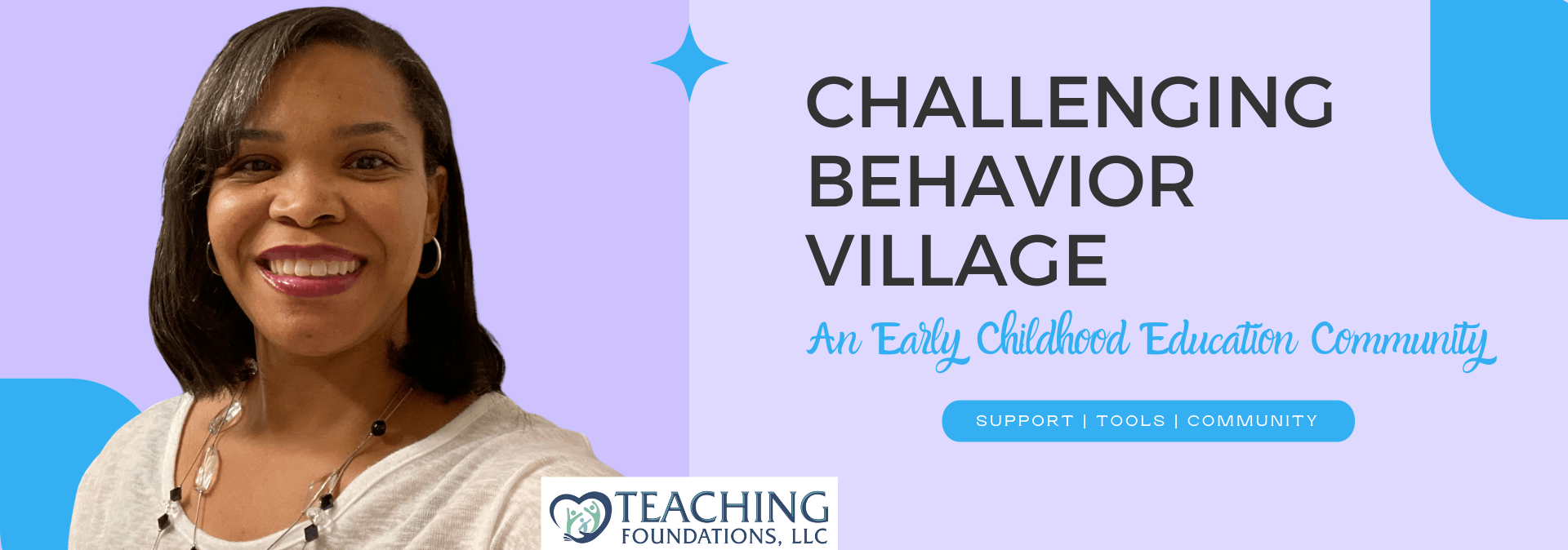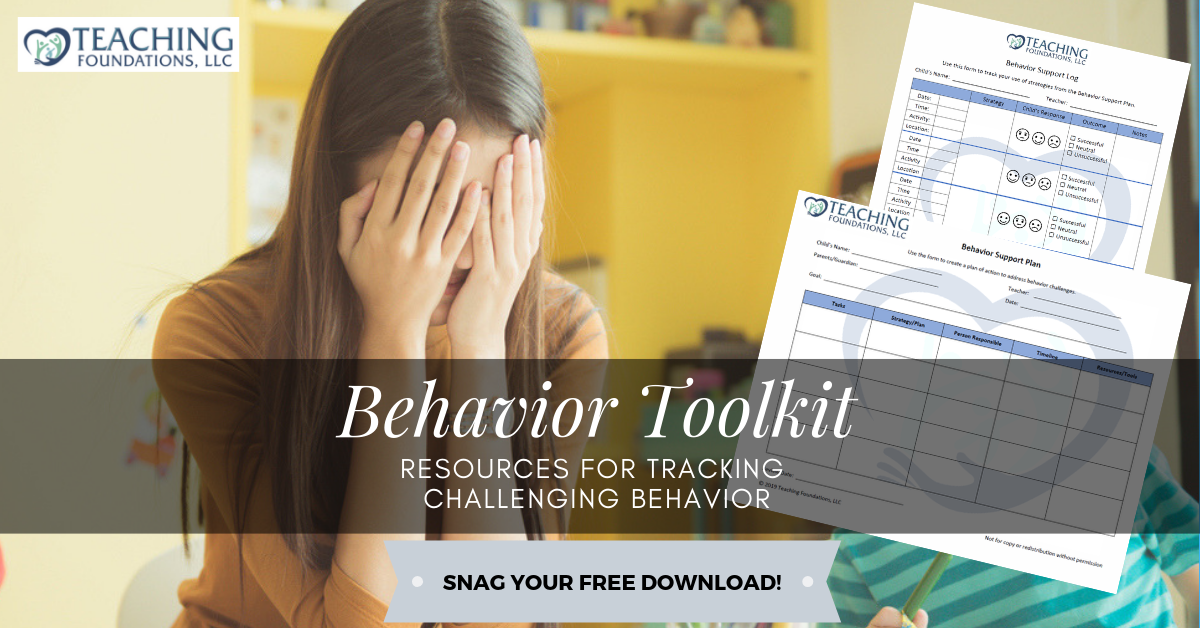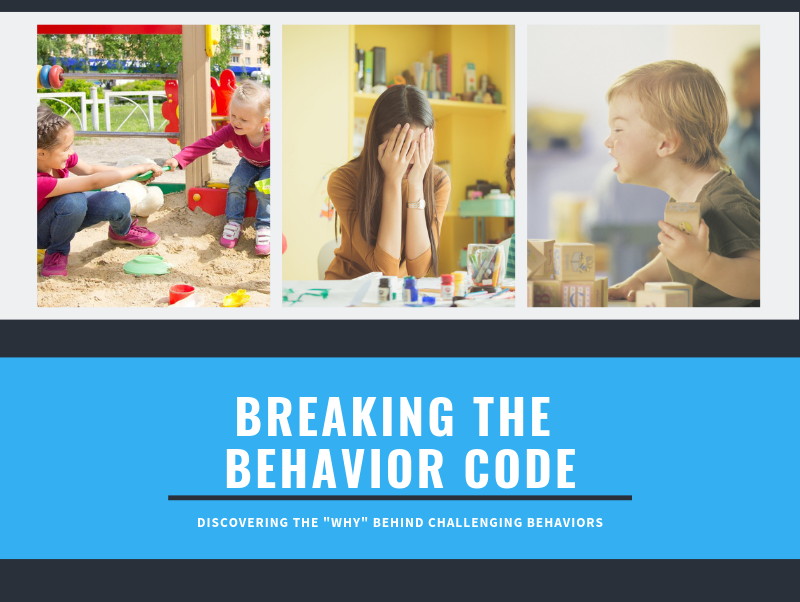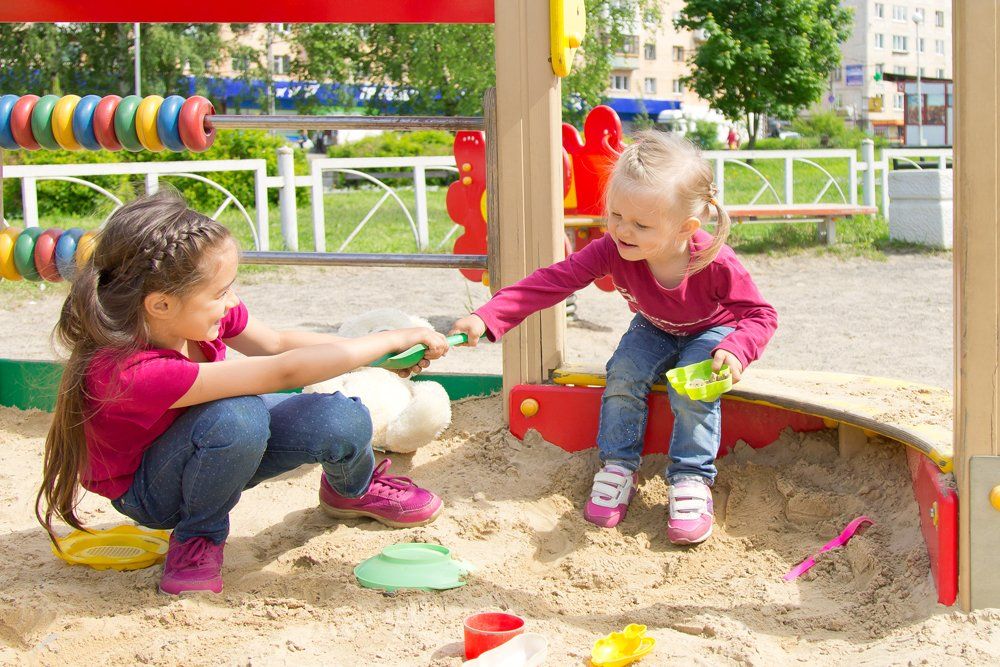How to Conquer Your Year with Successful Preschool Routines
Tiffany Jean Smith • August 25, 2019
It’s the beginning of the year and most of us are preparing our classrooms for the arrival of our students. We are arranging furniture, putting up decorations and displays, creating daily schedules, and planning our daily activities. However, there is one thing missing from this preparation. It is often the one thing that is the difference between having a classroom full of children who know and follow our schedules and a classroom full of children who need constant reminders and redirection to meet our expectations. It is the difference between saying, “I have the best class ever!” and “I can’t wait till summer starts!” What is it you’re asking……
It’s routines! Routines are “a sequence of actions regularly followed”. This means routines are the things we do every day in the same order. Classroom routines are important because they give children structure which decreases their anxiety and fosters a feeling of security, comfort, and trust in their environment. Children may not know how to tell time, but they do know and understand the sequence of a routine. This helps them to know what comes next and begin to meet your expectations. As stated in our previous article
about transitions, children need to know what to do, when to do it, and how to do it
in order to meet our expectations for their behavior.
Classroom management is more than simply putting up a great behavior chart and rewarding good behavior. Classroom management involves giving children clear, concise routines to follow. The more clearly defined the routine, the easier it is for children to know what you want them to do and, thus, comply with your expectations. This is the key to getting your year with the children off to a great start.
How do I create consistent routines?
You know you have a specific routine when the children tell other adults what comes next when visiting your classroom. When planning classroom routines, there are two questions you need to ask yourself:
1. What do I want the children to do?
1. What do I want the children to do?
As stated earlier, the children need to know what to do, when to do it, and how to do it. In order for the children to know this, you first have to decide what you want the children to do. Is it line up in one line, walk outside, put names next to areas during choice time, sit and read in the library area, etc. If you don’t know specifically what you want the children to do, you won’t be able to teach them a consistent routine.
To help you plan your classroom routines, I have created the Planning Classroom Routines form shown above. You can use it to write the procedures for each part of your daily schedule. This form can be shared with others assisting in your room or supporting your classroom in your absence to ensure the consistency of routines when you are not present.
To answer this question, you would list what you want the children to do in the Behavior Expectations
section. For example, I listed “Circle Time” under activity and listed “sit down, participate in discussions, listen to other children’s ideas, and stay in their own space”. With specific expectations listed, I am now able to move on to the second question for designing a successful classroom routine.
2. How do I want them to do it?
Anything you want the children to do must have a specific procedure that you follow. You can add procedures throughout the year as you need them. Once you decide on the procedure, you must consistently follow the routine for at least one month for the procedures to become habits the children follow on their own. It takes 21 days to create a habit and it takes the same amount of time for children to learn new classroom routines. On the Planning Classroom Routines tool, you will list the steps and directions for each behavior expectation you have for each period in your daily schedule. If you work with a team of teachers, it is best to plan this step together to get everyone on the same page for classroom procedures.
For my circle time behavior examples, I listed have everyone sit on outside edges of the carpet area. I will have circle cut outs or carpet squares on the floor to mark space for the first few weeks. This design to seating allows everyone to see each other and participate in the group discussion as equals. To moderate who will talk and make a visual for turn taking, we will pass the talking stick around the circle. I created a song to sing as circle time begins. It is sung with the children each morning. For children who cannot sit, an alternative activity is planned including play dough or drawing. Fidgets will be offered to children as they participate in the circle time discussion.
READ FEATURED POST
For my circle time behavior examples, I listed have everyone sit on outside edges of the carpet area. I will have circle cut outs or carpet squares on the floor to mark space for the first few weeks. This design to seating allows everyone to see each other and participate in the group discussion as equals. To moderate who will talk and make a visual for turn taking, we will pass the talking stick around the circle. I created a song to sing as circle time begins. It is sung with the children each morning. For children who cannot sit, an alternative activity is planned including play dough or drawing. Fidgets will be offered to children as they participate in the circle time discussion.
If you’re struggling with implementing consistent routines with the children in your class, I encourage you to download our Planning Classroom Routines tool
today from our Free Resource Library. You can do the same thing I did with my circle time expectations with all the parts of your daily schedule. Once you have the plan, you can focus on “teaching” the routine to the children.
If you encounter challenging behaviors, this article
will help you track the behavior to identify appropriate supports. You can also download our Daily Behavior Support
form from the Resource Library, which allows you to plan adaptations to current classroom routines based on individual child needs.
I would love to hear your thoughts about classroom routines. What are your favorite routines? Where do you struggle with routines? Leave your responses in the comment section below or you can join our Challenging Behavior Village, a group of early childhood professionals all working to reduce challenging behaviors together. Click here to join!
Hi Everyone! I am the founder of Teaching Foundations, LLC. I have over 15 years experience in the field of Early Childhood Education. I share with you strategies and tools for managing challenging behaviors that I have learned as a classroom teacher, curriculum specialist, and behavior consultant. Let's conquer challenging behaviors together!
Do you have a process for addressing challenging behaviors in your early childhood program? Our live, instructor-led virtual training, Breaking the Behavior Code: Discovering the "Why" Behind Challenging Behaviors will teach you our 5-step process. Sessions running in September and October.
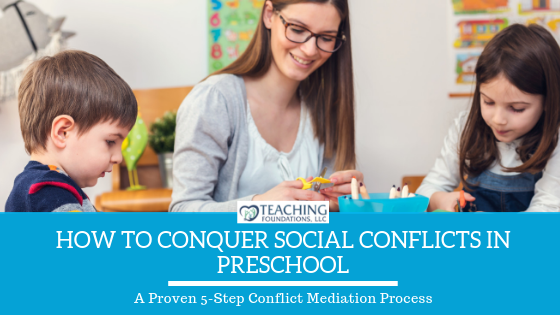
Social conflicts are everywhere in a preschool classroom. Children fighting over toys in the block area, calling each other names, saying, "You can't come to my party", and pushing to be the first in line are all common social conflicts encountered by preschool teachers. Learn the 5-steps you can take to conquer these social conflicts and teach children how to problem solve at the same time.
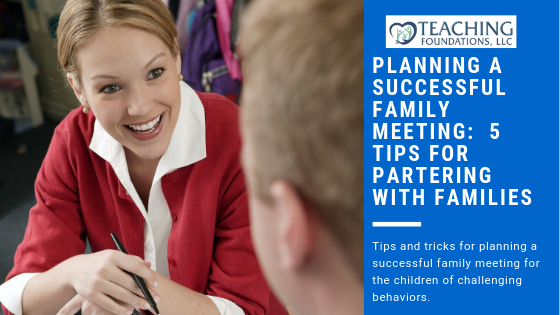
An important part of working with children with challenging behaviors is meeting with parents to create a behavior support plan. For most preschool teachers, this meeting can be intimidating as you work with resistant and defensive families. I share with you my 5 tips for creating successful behavior support meetings with the families of children in my programs. Using these tips in your classroom is sure to bring strong, more connected partnerships with the families in your room.
Have you started tracking the challenging behaviors in your classroom and now you're wondering what to do with all the documentation? Collecting information about children's challenging behaviors only works if you know what to look for in all the information. This article will introduce you to the 5 needs behind all human behaviors. You will also learn signs of each need in children's behaviors and how to adapt your classroom environment and routines to meet each of the 5 needs.
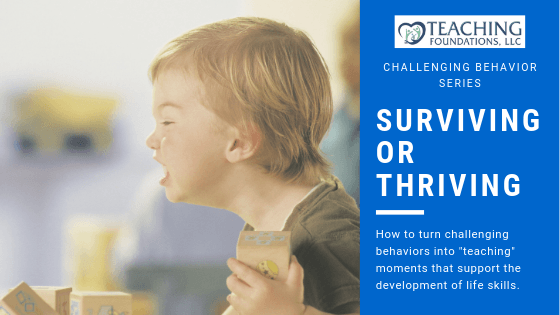
Every teacher has challenging moments in their day when children hit, scream, throw toys, or spit. While these moments can be frustrating and draining, they present opportunities for us to teach children missing social skills that are necessary for thriving later in life. Learn 3 questions you can ask yourself when addressing challenging behaviors to turn classroom "survival" moments into learning opportunities that teach children how to "thrive" in life.

Are you struggling with managing challenging behaviors in your classroom? Does it seem like you spend more time redirecting behavior than actually teaching? Well, this article is for you! Learn the 5-Step process for managing challenging behaviors, including tracking incidents, creating behavior support plans, and communicating with families.

